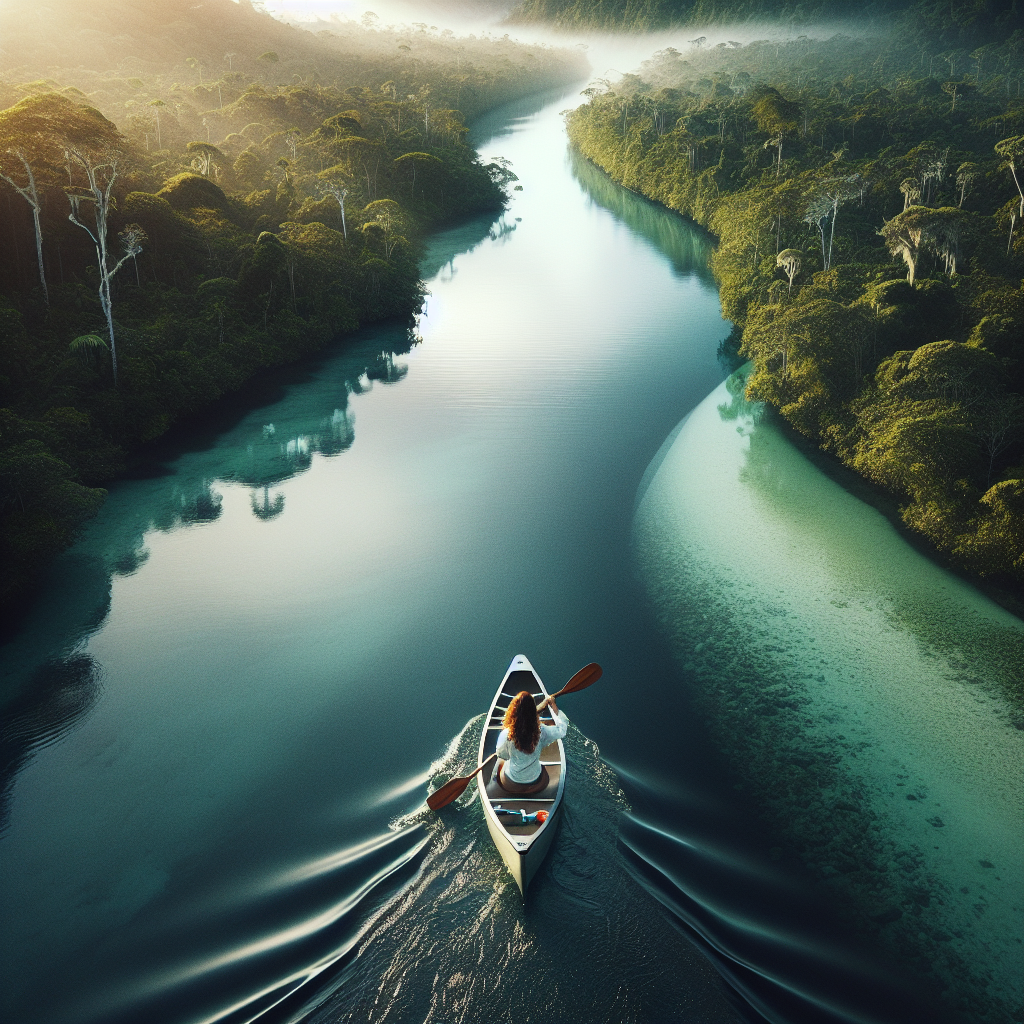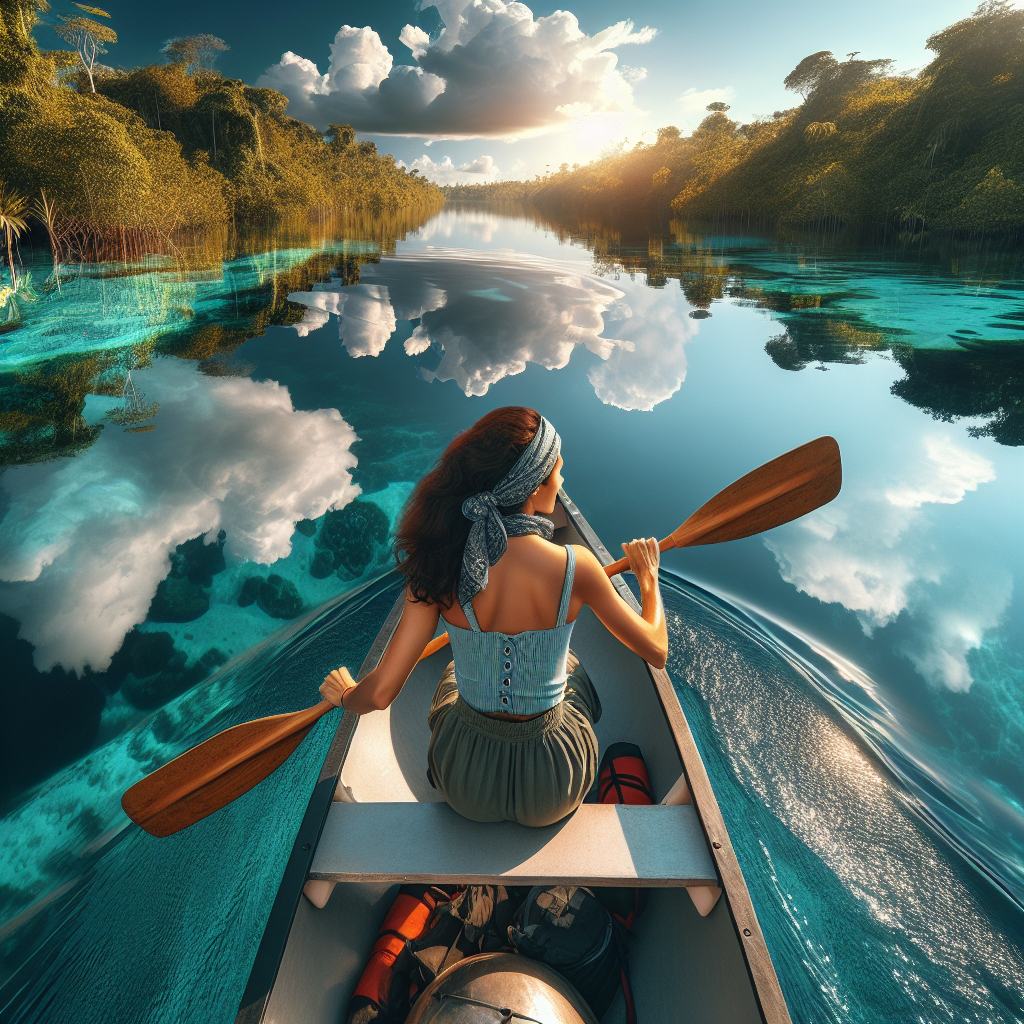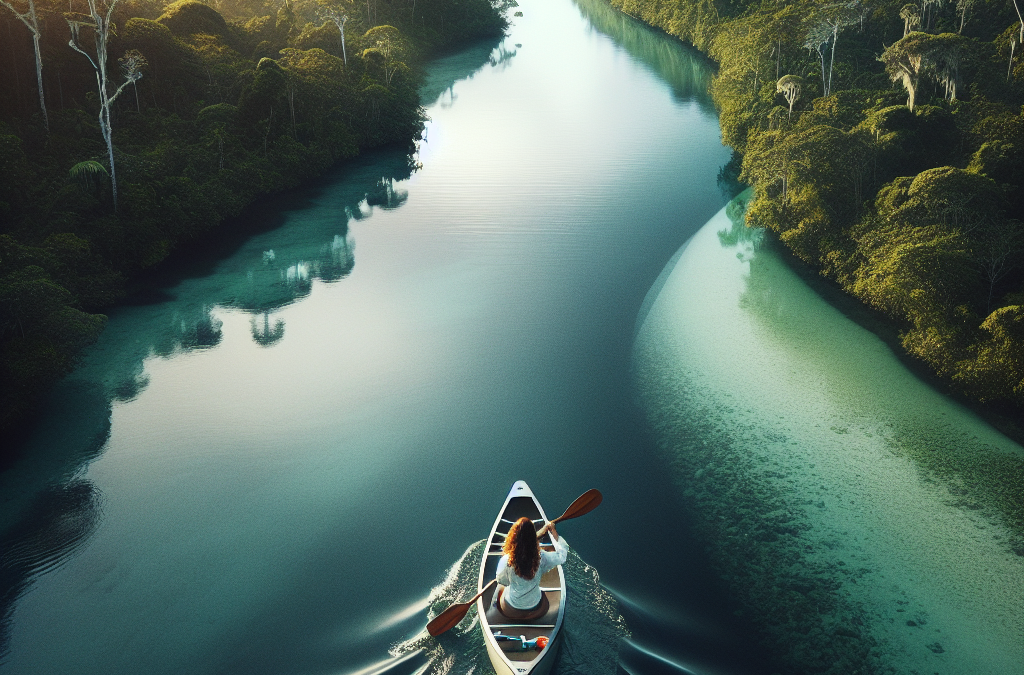Imagine yourself gracefully steering a canoe down a serene, untouched river that meanders through the heart of a sprawling wilderness. “Canoeing Through The Wilderness: A Paddler’s Guide” will navigate you on the ins and outs of this age-old activity. This in-depth guide will provide essential information about canoeing, from equipping your vessel and planning your route, to safely traversing quiet water and rapid-filled rivers, to maximizing the rich rewards of oneness with nature. This exciting journey takes you from being a novice to becoming a seasoned wilderness paddler. Enjoy, learn, and lose yourself in the thrill of the silent yet exhilarating world of canoeing.

Understanding Canoeing Basics
Canoeing is a water-based activity that not only offers a fantastic way to explore some of nature’s most beautiful landscapes, but also provides an excellent workout. Before you embark on your canoeing adventure, it’s important to grasp the basic fundamentals of this amazing activity. This includes understanding the different types of canoes, the basic techniques of canoe paddling, and the safety measures and precautions you need to adhere to while canoeing.
Different Types of Canoes
Canoes come in a variety of shapes and sizes, each designed to serve a specific purpose. There are recreational canoes that are stable and easy to maneuver, making them perfect for beginners. Touring canoes, on the other hand, are designed for long-distance paddling and can hold a lot of gear, making them ideal for overnight trips. Whitewater canoes are built to handle rough waters, and racing canoes are streamlined for speed. Knowing the different types of canoes will help you choose one that best fits your needs.
Fundamentals of Canoe Paddling
Mastering the art of canoe paddling involves the understanding and application of a few fundamental techniques. You’ll need to learn how to propel, stop, and steer the canoe effectively. Paddling a canoe is all about leverage and balance – your body movements should be synchronized with the paddling strokes for maximum efficiency.
Safety Measures and Precautions while Canoeing
Safety on the water should never be taken lightly. Always wear your life jacket, known as a personal flotation device (PFD). Make sure you understand the basics of water safety and rescue techniques. Before setting out, inform someone about your plans and estimated return time. Stay sober and stay alert to keep your canoeing adventure safe and enjoyable.
Planning Your Canoeing Trip
Proper planning goes a long way in ensuring a successful and enjoyable trip. When planning your canoeing trip, consider the location, duration of your trip, weather and water conditions, and necessary equipment.
Choosing the Right Location for Canoeing
The right location for your canoe trip depends on your skill level and desired experience. Beginners might prefer calm and controlled environments like lakes or slow-moving rivers, while experienced paddlers might choose thrilling whitewater rapids or expansive coastal routes.
Planning the Duration of Your Trip
The duration of your canoe trip can vary from a few hours to several days. Consider your physical stamina, canoeing skills, and the nature of the adventure you seek while planning the length of your trip.
Understanding the Weather and Water Conditions
Check the weather forecast and water conditions before your canoe trip. Rapid changes in weather can make the waters unpredictable and dangerous. Avoid canoeing during stormy weather or when the water levels are unusually high.
Essential Gear to Pack
Packing the right gear can make or break your canoeing experience. Essentials include a good quality life jacket, a sturdy paddle, helmet (for whitewater canoeing), sunglasses, sunblock, water-resistant clothing, and a waterproof bag to keep your belongings dry. If camping, make sure to pack a lightweight tent, sleeping bag, cooking equipment, and sufficient food and water.
Paddling Techniques and Handling the Canoe
Quality paddling techniques contribute to a smooth and enjoyable journey. Understanding strokes, navigating through various water elements, and managing the logistic of your canoe are part of this process.
Mastering the Basic Paddling Techniques
Imperfect paddling can lead to inefficient movement and potential fatigue. Therefore it’s important to master a few basic paddling techniques such as the forward stroke for moving straight ahead and the sweep stroke for steering.
Understanding the Use of J-strokes
A J-stroke is a technique used in paddling that combines steering and power into one stroke, allowing the canoer to maintain a steady course without switching paddling sides. This stroke takes some practice to master but can significantly increase your efficiency and enjoyment on the water.
Navigating through Rapids and Streams
Navigating whitewater rapids and streams can be thrilling but also challenging. It requires skill, knowledge, and experience. Scouting and planning your route can be helpful in tackling these settings.
Proper Loading and Balancing of Canoe
Loading and balancing your canoe correctly can greatly affect its stability. A properly loaded canoe is balanced both front to back and side to side. Uneven distribution of weight can cause the canoe to tip over or be difficult to steer.
Canoeing in the Wilderness
Canoeing in the wilderness presents unique challenges and rewards. It can be a profound way to connect with nature. However, it also requires advanced planning and heightened awareness of your surroundings.
Adhering to Leave No Trace Principles
While enjoying the wilderness, it’s essential to minimize your impact on the environment by adhering to the Leave No Trace principles. Avoiding disturbing wildlife, leaving what you find, respecting other visitors, and properly disposing of waste are integral to these principles.
Dealing with Wildlife
Encountering wildlife is part of the thrilling experience of canoeing in the wilderness. However, it’s important to respect nature and act in ways that won’t harm animals or disrupt their habitats.
Canoe Camping
Canoe camping trips often involve navigating to remote areas and setting up camp in scenic locations. This requires packing light but sufficient camping gear and learning how to set up and break down camp efficiently.
Essential Survival Skills
When canoeing in the wilderness, knowledge of fundamental survival skills such as navigation, first aid, fire-building, and signaling for help can be invaluable.

Handling Emergency Situations
Even with solid preparation, emergencies can happen while canoeing. It’s important to know how to handle various crises to protect your safety and that of your companions.
Canoe Capsizing and What to Do
Capsize is a common event in canoeing. If you do capsize, stay calm, hold on to your paddle, and swim to safety. Don’t panic; use your energy to survive and seek help.
First Aid Knowledge Crucial for Canoeing
Knowing basic first aid can aid in mitigating injuries or illnesses while help arrives. From treating cuts and burns to dealing with dehydration or hypothermia, this knowledge can be a literal lifesaver.
Surviving in the Wilderness
Survival in the wilderness involves wisdom and resilience. Starting a fire, finding drinkable water, and basic shelter-building are among the skills valuable for anyone canoeing in remote areas.
Capsize Prevention and Recovery
Capsizing can be one of the most challenging experiences to manage while canoeing. It’s crucial to know the causes, how to prevent it, and how to recover if it happens.
Understanding the Causes of Capsize
Capsizing usually results from a loss of balance, caused by sudden or heavy movement, improper loading, or rough water conditions. Recognizing these risks will help you prevent a capsize.
Preventing Capsize
Preventing capsize involves maintaining a low centre of gravity, appropriate reactions to waves, and distributing weight evenly in the canoe.
Recovery Techniques after Capsize
If a capsize occurs, staying calm and following safety protocols helps. These include holding onto your paddle, staying upstream of the canoe, and swimming to shore only when it’s safe.
Physical Conditioning for Canoeing
Canoeing is a physically demanding activity. Strengthening your upper body, core and focus on endurance will help you paddle efficiently and stay safe on the water.
Upper Body Strength Training
Strong arm and shoulder muscles will make your paddling more effective. Resistance training and swimming are both excellent for strengthening your upper body.
Core Strength Exercise
A strong core will help you maintain balance in the canoe, which is essential for controlling your movement. Exercises like planks, yoga, and pilates can help you boost your core strength.
Endurance Training
Endurance training is necessary for longer canoeing trips. Regular cardio exercise like running, biking, and swimming can increase your stamina.
Flexibility and Balance Exercises
Better balance and flexibility enhance your ability to maneuver the canoe and prevent capsizes. Yoga and tai chi are useful exercises to improve these.
The Role of Eco-Consciousness in Canoeing
Canoeing offers a unique opportunity to experience and appreciate nature. As you become an active steward of nature’s waterways, remember the need for eco-consciousness and respect.
Promoting Wildlife Conservation
A respect for wildlife is integral to the principle of eco-conscious canoeing. Avoiding disturbance to animals and plant life in the areas through which you paddle is a practical way to contribute to wildlife conservation efforts.
Non-Invasive Canoeing
Non-invasive canoeing involves minimizing your impact on the ecosystem. This includes sticking to the waterways, avoiding disturbance to aquatic habitats, and preventing the spread of invasive species.
Respecting Indigenous Lands
Many canoe routes pass through lands important to Indigenous peoples. Respecting these lands and cultures and acknowledging their traditional custodians helps maintain the rich heritage of these areas.
Guidelines for Overnight Canoe Trips
Overnight canoe trips can make for memorable experiences. Selecting good campsites, proper camp setup, and managing meals and hygiene are important parts of the trip.
Selecting Campsites
Choose designated areas for setting up camp, respecting any public or private ownership rights, and minimizing environmental impact.
Setting Up Camp
From pitching tents to setting up cooking areas and safely storing food, efficient camp setup boosts your comfort and safety.
Camp Cooking and Meal Plan
Planning meals that are easy to prepare, nutritionally balanced and light to carry can massively enhance your overnight canoeing trip.
Maintaining Camp Hygiene
Proper sanitation and hygiene practices while camping are crucial for health and the environment. Dispose of waste properly, maintain personal hygiene, and respect the natural surroundings.
Inspirational Canoeing Experiences and Destinations
Sharing and learning about canoeing experiences and exploring notable destinations can inspire future adventures and deepen your appreciation for this versatile sport.
Sharing Wilderness Canoeing Stories
Every canoeing journey unfolds a unique story. Sharing these stories can inspire others and create a sense of companionship among fellow canoeists.
Highlighting Notable Wilderness Canoe Routes
Notable canoe routes are a paddler’s paradise. Beautiful and challenging, they offer chances for amazing experiences and memories.
Understanding the Cultural Significance of Canoeing
Canoeing holds historical and cultural significance in many societies around the world. Understanding this can add another level of appreciation for the sport.
Remember, canoeing is more than an adventure—it’s a conduit for building resilience, creating unforgettable experiences, and nurturing respect for nature. So, paddle on and drink in the beauty of nature, one stroke at a time!

